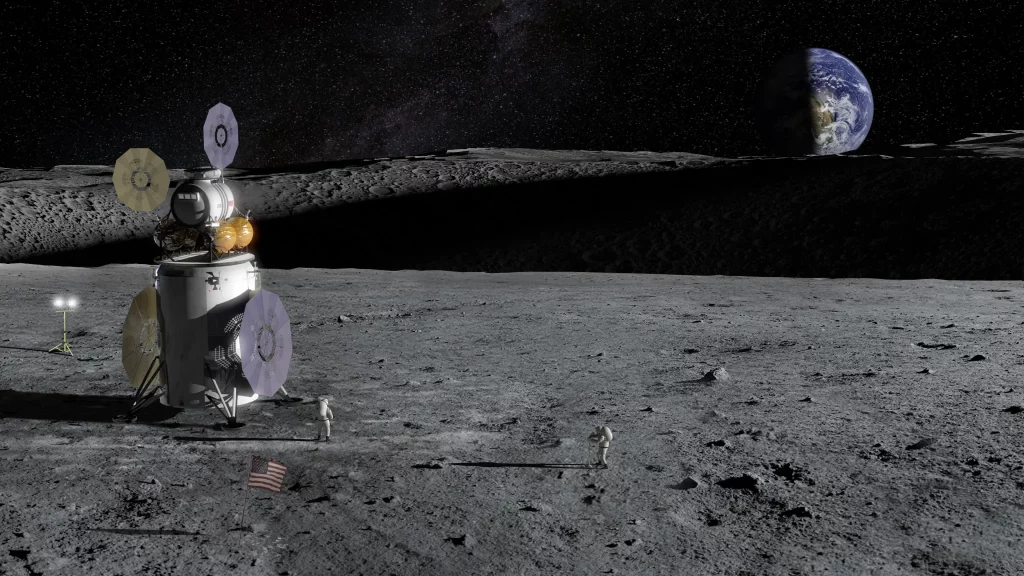Introduction to Optical Navigation Technology
In the ever-evolving field of space exploration, NASA’s advances in optical navigation technology represent a significant leap forward. This technology is poised to revolutionize how spacecraft navigate and explore our solar system. Optical navigation involves using advanced imaging systems and algorithms to determine a spacecraft’s position and trajectory with unprecedented precision. This capability not only enhances mission accuracy but also opens up new possibilities for ambitious space missions.
The Basics of Optical Navigation
Optical navigation relies on capturing images of celestial bodies and other reference points in space. By analyzing these images, scientists and engineers can calculate the spacecraft’s exact location and orientation. This process involves several key components:
- Imaging Systems: High-resolution cameras and sensors onboard the spacecraft capture detailed images of celestial objects, such as planets, moons, and stars. These imaging systems are designed to work in various lighting conditions and distances.
- Data Processing: Advanced algorithms process the captured images to extract relevant data, such as the positions of celestial bodies. This data is used to calculate the spacecraft’s trajectory and adjust its path as needed.
- Feedback Mechanisms: Optical navigation systems include feedback loops that continuously adjust the spacecraft’s course based on real-time data. This ensures that the spacecraft remains on the correct path throughout its journey.
Historical Context and Development
The concept of optical navigation has been around for decades, but recent advancements have significantly improved its accuracy and reliability. Early missions relied on less sophisticated methods, such as ground-based observations and simple onboard sensors. As technology evolved, NASA began developing more advanced systems capable of providing real-time navigation data.
One notable milestone in optical navigation technology was the development of the Deep Space Network (DSN), which uses ground-based antennas to track spacecraft and relay data. While DSN remains a crucial part of space exploration, optical navigation technology offers a complementary approach by providing more precise and immediate data.
Applications in Planetary Exploration
NASA’s optical navigation technology has profound implications for planetary exploration. By enhancing spacecraft navigation capabilities, this technology enables more ambitious missions and improves the chances of success. Here are several key applications:
- Enhanced Mission Accuracy: Accurate navigation is essential for missions targeting specific locations on planets or moons. For example, landing a rover on the surface of Mars requires precise calculations to ensure it lands within a designated area. Optical navigation technology provides the accuracy needed to achieve this goal.
- Improved Data Collection: With precise navigation, spacecraft can more accurately position themselves for scientific observations. This capability allows for better data collection, such as detailed surface mapping and atmospheric analysis. For instance, missions like NASA’s Mars Reconnaissance Orbiter rely on optical navigation to capture high-resolution images of the Martian surface.
- Autonomous Operations: Optical navigation technology enables greater autonomy for spacecraft. By processing data onboard, spacecraft can make real-time adjustments to their trajectory without waiting for instructions from Earth. This autonomy is crucial for missions exploring distant or remote locations where communication delays are significant.
- Support for Complex Missions: Optical navigation supports more complex missions involving multiple spacecraft or extended missions. For example, missions involving asteroid mining or deep space exploration require precise coordination between multiple spacecraft. Optical navigation facilitates this coordination by providing accurate positioning data.
Case Studies and Examples
Several NASA missions have demonstrated the effectiveness of optical navigation technology. These case studies highlight the technology’s impact on mission success:
- Mars Rover Landings: The successful landing of NASA’s Curiosity rover on Mars in 2012 was a testament to the precision of optical navigation. The rover’s landing system relied on advanced imaging and navigation techniques to ensure a safe touchdown in the Gale Crater.
- Voyager Probes: The Voyager probes, launched in the 1970s, utilized early forms of optical navigation to explore the outer planets. Despite the limited technology available at the time, these missions provided valuable data about Jupiter, Saturn, Uranus, and Neptune.
- OSIRIS-REx Mission: NASA’s OSIRIS-REx mission, which aimed to sample an asteroid, utilized optical navigation to precisely maneuver around the asteroid Bennu. The mission’s success in collecting samples demonstrates the technology’s capability to support complex asteroid missions.
Technological Innovations and Advances
Recent advancements in optical navigation technology have significantly enhanced its capabilities. These innovations include:
- High-Resolution Imaging Sensors: Modern spacecraft are equipped with high-resolution cameras and sensors capable of capturing detailed images of distant celestial bodies. These sensors provide the data needed for accurate navigation and scientific observations.
- Advanced Algorithms: Improvements in data processing algorithms allow for more precise calculations of spacecraft position and trajectory. These algorithms can analyze large volumes of data quickly, providing real-time navigation updates.
- Miniaturization: Advances in miniaturization have made it possible to incorporate optical navigation systems into smaller and more cost-effective spacecraft. This development enables a broader range of missions, including those involving small satellites and CubeSats.
- Integration with Other Technologies: Optical navigation is increasingly being integrated with other technologies, such as radio frequency (RF) systems and inertial navigation systems. This integration provides a more comprehensive approach to spacecraft navigation, combining the strengths of different technologies.

Challenges and Considerations
Despite its advantages, optical navigation technology faces several challenges that must be addressed:
- Space Environment: The space environment presents unique challenges, such as varying lighting conditions and radiation. These factors can affect the performance of optical navigation systems and require careful consideration in their design.
- Data Processing Requirements: The large volume of data generated by optical navigation systems requires significant processing power. Ensuring that spacecraft can handle this data efficiently is crucial for maintaining accurate navigation.
- System Reliability: The reliability of optical navigation systems is essential for mission success. Redundancy and fault-tolerance mechanisms must be implemented to ensure that the system continues to function correctly even in the event of a failure.
- Cost and Resources: Developing and deploying advanced optical navigation systems can be costly. Balancing the benefits of these systems with their cost and resource requirements is an important consideration for mission planning.
Future Prospects and Applications
Looking ahead, optical navigation technology is expected to play a crucial role in future space missions. Some potential future applications include:
- Exploration of Outer Planets: As NASA plans missions to explore the outer planets and their moons, optical navigation will be essential for precise maneuvering and data collection. Missions targeting ice moons like Europa and Enceladus will benefit from enhanced navigation capabilities.
- Interplanetary Travel: Optical navigation technology will support missions involving travel between planets, such as crewed missions to Mars. Accurate navigation will be critical for ensuring that spacecraft reach their destinations safely and efficiently.
- Asteroid Mining: Future missions involving asteroid mining will require precise navigation to target and interact with asteroids. Optical navigation will enable accurate positioning and maneuvering around these distant objects.
- Deep Space Exploration: Optical navigation will be instrumental in exploring regions of space beyond our solar system. Missions to study interstellar objects or exoplanets will rely on advanced navigation systems to guide spacecraft through vast distances.
Conclusion
NASA’s optical navigation technology represents a significant advancement in spacecraft navigation and planetary exploration. By providing precise positioning data and enabling autonomous operations, this technology enhances mission accuracy and opens up new possibilities for ambitious space missions. As NASA continues to develop and refine optical navigation systems, we can expect to see even more groundbreaking missions and discoveries in the future.
Through its applications in missions such as Mars rover landings, asteroid exploration, and outer planet studies, optical navigation technology has already demonstrated its value. Looking ahead, its role in supporting complex missions, interplanetary travel, and deep space exploration will be crucial for expanding our understanding of the solar system and beyond.
As we venture further into space, the continued advancement of optical navigation technology will be essential for achieving mission success and exploring new frontiers. NASA’s commitment to innovation and exploration ensures that we are well-equipped to tackle the challenges of space and unlock the mysteries of the cosmos.


















































Discussion about this post